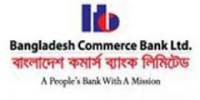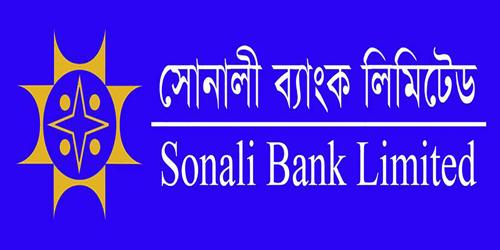Credit Risk Management System of GSP Finance Company
This Report describes the Credit Risk Management system of GSP Finance Company (Bangladesh) Limited and analyses how certain factors affect the determination of interest rate for the company.
Today, Non-banking Financial Institutions are contributing much in the economy of Bangladesh.
There are now 31 NBFIs in Bangladesh which are providing diversifying financial services to their customers. Like banks, these financial institutions are also highly exposed to credit risk; as the main activities of NBFIs are financing other institutions and individuals through various credit facilities. For that reason, managing credit risk is a crucial task for all Financial Institutions.
GSP Finance Ltd is one of the 31 NBFIs in Bangladesh, pursuing business for last 18 years. It has been financing commercial, industrial and SME sectors through Lease and Term Loan finance. To manage the credit risk associated with financing, GSP Finance has Credit Risk Management Department. This department reviews the credit applications, mitigates risk by ensuring appropriate terms & conditions, and directly monitors and manages all unclassified/classified accounts. Another important responsibility of the department is to ensuring that the company is earning right rate of return against the risk taken by facilitating finances. This is why the analysis part of the report sees how certain factors influence the determination of interest from the perspective of GSP Finance.
Introduction:
Financial institutions, both banking and non banking, are the most vital components of any economy. Banks are surely more popular among people because of their regular customer services. Every day millions of monetary transactions occur around the globe, and banks make them possible. On the other hand, NBFIs cannot open booths for their customers or provide transaction facilities like banks do. According to Bangladesh Bank major differences between banks and NBFIs are:
- FIs cannot issue cheques, pay-orders or demand drafts.
- FIs cannot receive demand deposits,
- FIs cannot be involved in foreign exchange financing,
- FIs can conduct their business operations with diversified financing modes like syndicated financing, bridge financing, lease financing, securitization instruments, private placement of equity etc.
Despite the limitations NBFIs play a crucial role in the financial industry by providing additional financial services that are not always provided by full-fledged banking industry (Bangladesh Bank, 2014). NBFIs can help industry growth by accommodating long term finance, which banks cannot always do for their short term sources of fund. In addition, credits are sanctioned quicker in these institutions. NBFIs are rapidly growing and providing a helping hand to the industrial expansion of the country.
In Bangladesh NBFIs are incorporated under ‘Financial Institution Act, 1993’, followed by ‘Financial Institution Regulation, 1994’; they are supervised by Bangladesh Bank in a risk based supervisory system that reflects their important contribution.
The NBFIs are providing loan and lease facilities to various businesses and in some cases, to individuals. Moreover, the main sources of funds for these financing facilities of NBFIs are bank loans. Thus it is essential for NBFIs to manage the credit risk associated with financing.
NBFIs must have an effective Credit Risk Management system to mitigate potential losses and ensure a good rate of return for the shareholders.
This report emphasizes on the Credit Risk Management of GSP Finance Company (Bangladesh) Limited. It talks about the way GSPB assesses credit proposals, manages credit risk, sanctions loan/lease and ensures an acceptable return for the risk taken.
Origin of the Report:
This report has been prepared as a requirement of the internship program, which is an essential part for completing Bachelors of Business Administration (BBA).
Objectives of the Report:
Broad Objective:
- The first and main objective of preparing the report was to fulfill the academic requirement.
Specific Objectives:
- To know about the credit risk management of the company
- To understand the credit sanctioning process
- To find out how certain factors (CRG Score, Loan Amount, and Debt-equity & Interest coverage ratios of the client) influence the determination of interest rate
Methodology:
To prepare this report, information has been collected from both primary & secondary sources. The name of the sources as follows:
Primary Sources:
- Interaction with the officers of the company
- Observation during the program
Secondary Sources:
- Annual report of GSP Finance
- Bangladesh Bank’s guideline on Credit Risk
- websites, books and files
- other internship reports
This report is prepared with a combination of both descriptive and quantitative analysis. The descriptive part explains how Credit Risk Management is exercised in GSP Finance; and the quantitative part shows how certain factors influence the determination of interest rate in the company.
GSP Finance Company (Bangladesh) Limited:
At present, there are 31 NBFIs operating in Bangladesh, among them GSP Finance Company (Bangladesh) Limited is one of the finest. GSP Finance has been pursuing business for about 18 years maintaining fair, transparent and sound management; and it is known for its conservative yet prudent investment decisions. The company is committed to enhance the contribution of NBFIs towards a sustainable industrial development by participating in the areas of lease financing, merchant banking and other financial services.
GSPB emphasizes on diversifying its portfolio and for that reason it finances businesses of different sectors and sizes. The major activities of GSPB include lease financing in capital machinery, medical equipment, construction equipment, office equipment, marine and road transport and electrical equipment.
The other principal activities of GSPB include:
- Term Loan
- Syndication Finance
- SME Finance
- Deposit Schemes
- Bill discounting
- Underwriting
- Portfolio Management
- Corporate Advisory services
- Issue Management
- Margin Loan
GSP Finance is aimed to:
- Provide high quality financial services with state of the art technology.
- Work closely with their clients.
- Maximize return on equity.
- Maintain a high standard of professional ethics.
History of GSP Finance:
The initiative of establishing GSP Finance was taken by its chairman Mr. Feroz U. Haider along with some other entrepreneurs. Their goal was to provide financing and expertise and to become an industrial development partner with the People’s Republic of Bangladesh. The company was incorporated in Dhaka on October 29, 1995 with the Registrar of Joint Stock Companies & Firms under the Compliance Act, 1994. It received its certificate of commencement of business on January 14, 1996 and its license on March 4, 1996 as required under Section 4(1) of the Financial Institutions Act, 1993. On April 17, 1996, the company started its commercial operation with its one branch at Paribagh.
GSP Finance started its Merchant banking operations from 1999, as it received a license from Bangladesh Securities and Exchange Commission on August 24, 1999, for working as a Merchant Bank. More recently, GSP Finance Limited has formed a subsidiary named ‘GSP Investment Limited’ to separate its Merchant Banking operations, which is also a requirement of Bangladesh Securities and Exchange Commission.
Vision of GSP Finance:
To be a premier financial institution in Bangladesh with strong commitment to the development of the society and the national economy
Departments:
GSP Finance consists of eight (8) departments. The departments are:
- Sales
- Marketing
- Credit Risk Management
- Accounts & Finance
- Human Resources
- Information Technology
- Secretariat
- Internal Control & Compliance
Products:
Deposit Schemes
- Annual Return Program
- Double Return Program
- Triple Return Program
- Monthly Earner Program
- Quarterly Earner Program
- Profit First Program
Lease finance
- Direct Lease
- Sale & Lease back
Term Loan
Secured Loan (loan against TDR)
Loan syndication
Sources of Fund:
- Paid up Capital
- Reserve & Retained Earning
- Security Deposit
- Term Deposits
- Bank Borrowing
Risk Management:
To mitigate and manage risks associated with business with approved risk management system, GSP Finance Company (Bangladesh) Limited has separate committees namely, Credit Committee (CC) and Asset Liability Committee (ALCO). The committees regularly meet to review the market, credit and liquidity risk factors and recommend and implement suitable measures to counter associated risks. Credit Risk Management Department also assists the management in building a quality credit portfolio and maximizing return.
Description of the Project:
The project is about the Credit Risk Management of GSP Finance and how credit proposals are assessed. The Analysis part of the project finds out certain factors influence the interest rate for credit facilities as ‘ensuring appropriate payoff for the risk taken’ is an important aspect of Credit Risk Management’s job.
Objectives:
- To know about the credit risk management of the company
- To understand the credit sanctioning process
- To find out how factors (CRG Score, Loan Amount, Tenure and Debt-equity & Interest coverage ratios of the client) influence the determination of interest rate
Methodology:
The project on is based on both qualitative and quantitative information. The qualitative information is actually taken to describe the credit risk management procedure of the company; and the quantitative information is used to see how certain factors influence the determination of interest rate, using statistical tools like, Correlation and Regression.
Credit Risk:
An element of credit risk exists whenever an individual takes a product or service without making immediate payment for it (Caouette, Altman and Narayanan, 1998, p. 9). If credit can be defined as the expectation of a sum of money within a limited time, then credit risk is the chance that this expectation will not be met; as noted by the authors of ”Managing Credit Risk: The Next Great Financial Challenge”.
Credit Risk can also be defined as potential losses from refusal or inability of credit customers to pay what is owed in full and on time (Graham, 2000).
According to Bangladesh Bank Credit risk guideline (2005), Credit Risk is the possibility that a borrower or counter party will fail to meet agreed obligations. It may take the following forms:
- In direct lease/term finance: rentals/principal/and or interest amount may not be repaid
- In issuance of guarantees: applicant may fail to build up fund for settling claim, if any;
- In documentary credits: applicant may fail to retire import documents and many
- others
- In factoring: the bills receivables against which payments were made, may fail to be
- paid
- In treasury operations: the payment or series of payments due from the counter parties under the respective contracts may not be forthcoming or ceases
- In securities trading businesses: funds/ securities settlement may not be effected
- In cross-border exposure: the availability and free transfer of foreign currency funds may either cease or restrictions may be imposed by the sovereign
Credit Risk Management:
As per Bangladesh Bank Credit Risk guideline, globally, more than 50% of total risk elements in banks and FIs are Credit Risk alone. Therefore, managing credit risk has become the most crucial task for a Financial Institution. Credit Risk Management encompasses identification, measurement, matching mitigations, monitoring, and control of the credit risk exposure to ensure that:
- The organization’s risk exposure is within the limits established by its Board of Directors’
- Risk taking decisions are in line with the business strategy and objectives set by company’s Board of Directors
- The expected payoff compensates the risk taken
- Risk taking decisions are explicit and clear
In short, Credit risk management is a process that enables financial institutes to proactively manage facility portfolios to minimize losses and earn an acceptable rate of return to shareholders.
Credit Sanctioning Procedure of GSP Finance:
GSP mainly offers two credit facilities: Loan and Lease. The basic process for sanctioning both the facilities is almost similar. The financing procedure for GSP Finance is briefly given below:
Receiving application for Loan/Lease facility: At first, a potential client submits a proposal to the marketing team for loan/lease facility. In the application, the interested party states the amount required to be financed, purpose & tenure of the financing, and through which facility the applicant wants to be financed.
Meeting the potential client & collecting all necessary documents: After receiving the application, some of the marketing team members meet the interested party, and go for a field visit. If the proposal seems good to them, they collect all necessary documents, which are mentioned in the previous chapter. To get loan/lease facilities borrowers usually need to submit the following documents:
- Fully filled Application form with two copies of passport size photographs
- Memorandum & Articles of Association (in case of Company)
- Financial Statements of last three years
- Bio-data of directors’/proprietors with two copies of passport size photographs
- Photocopy of National ID card of each director
- Net worth statement of directors
- Latest Tax return certificate of directors with IT-10B
- Photocopy of Trade license, VAT registration certificate
- Photocopy of Certificate of incorporation
- CIB Undertaking
- TIN (for both company & directors)
- Board Resolution
- Liability status with other financial institutions
- Projected Financial statements
- Quotation for Direct lease
- Mortgage documents
Presenting Call Report to the Managing Director for initial approval: Then the marketing department prepares a Call Report, informing management about the proposal and providing information about the customer that has been collected so far.
Sending Credit Proposal to CRM department: After the proposal has initially been approved, the marketing department prepares and sends the Credit Proposal to the Credit Risk Management department. Credit proposal summarizes the following things:
- Amount & type of facility
- purpose of facility
- facility structure (Tenure, repayment schedule, interest rate)
- Covenants
- Security Arrangements
- Economic risks
- Borrower analysis
Scrutinizing of credit proposal by the CRM team: The CRM department then examines the proposal. The tasks of this stage are actually described in the next chapter.
Recommending proposal to the Executive Committee: When the CRM department is ensured that the rationale for financing is justified; they prepare the Credit Memorandum and recommend the proposal to the Executive committee.
Approval by the Executive Committee: In the Executive Committee meeting, the members discuss the proposal and come to a conclusion about the proposal.
Issuance of sanction letter: With the approval of the Executive committee, the sanction letter of the facility is issued and sent to the potential client. If they agree with all the terms & conditions, the official agreement will take place.
Documentation for the facility: The client then signs all legal documents and handovers all required charge documents to the CRM department. Usually the following charge documents are taken as securities:
- Demand Promissory Note (D.P. note)
- Revival Letter
- Letter of Authority
- Letter of Corporate Guarantee
- Letter of Personal Guarantee
- Letter of Agreement
- Disbursement letter
Disbursement of the credit facility: Finally, after documentation, the credit facility is financed.
Credit Risk Management of GSP Finance Company (Bangladesh) Limited
GSP Finance Company (Bangladesh) Limited has a separate department for managing credit risk. The Credit Risk Management Department of GSP Finance works for mitigating, managing and monitoring credit risk. In addition, this department plays a vital role in the credit approval procedure.
The functions of CRM department are:
- Reviewing Credit Applications recommended by the Relationship Manager and providing independent risk assessment and recommendation to the Executive Committee
- Mitigating business risks by ensuring appropriate terms and conditions are used for credit facilities
- Providing advice/assistance regarding all credit matters to Relationship Manager
- Directly managing all Substandard, Doubtful, Bad/loss accounts to maximize recovery
The task of Credit Risk Management Department starts after the Marketing team sends Credit Application and other documents to them. After getting the file of a proposed client, CRM does the following things:
Assessment of Applications:
The Credit Risk Management of GSP Finance goes through every aspect of an applicant to ensure that the company is in a secured position. They judge the applicants in respect of their credit worthiness, financial stability, and business reputation. The major factors that are considered to assess an applicant are:
Purpose of finance, Finance amount & Tenure: The first things that are noticed in a loan/lease application are the requested amount, the purpose & tenure of the facility; what percentage of the requested amount can be financed and whether the requested amount and tenure for the facility goes with the purpose. For example, an application is not acceptable with the purpose to meet working capital requirement and tenure of 30 months. In that case, the tenure can be revised to consider the application. The type of finance (Loan/Lease) is another aspect of an application. Usually Lease facility is used to purchase machineries, equipments or vehicles; so, request for Loan facility will not be applicable in that case.
Offered Securities: To mitigate credit risk, GSPB does independent valuation of securities that are offered by the applicant through some valuation agencies. In addition, CRMD checks whether the securities and guarantee are good enough to back up the finance amount. If not, the marketing department communicates with the applicant for better security, otherwise the proposal is counted as unacceptable. The possession of the security is also very important.
Company background: Company’s industry wise position, financial condition, lists of directors, experience of the Management, company’s sister concerns & their financial conditions- these are the areas to check on company’s background. An industry leader with highly experienced management will certainly get priority to obtain credit facility.
CIB Report: To check credit history of an applicant with other banks and financial institutions, GSPB obtains Credit Information Bureau (CIB) Report from Bangladesh Bank. An applicant’s total outstanding loan amount, no. of classified accounts etc. can be known from CIB report. GSPB finances if the report shows standard (STD) credit background of the applicant.
Previous Payment record: The previous payment records are checked, if the applicant is an existing client of GSPB,
Financial Statements & Ratios: GSPB takes audited financial statements for lasted 3 years. From financials the followings are mainly seen & compared:
- Sales/Revenues, Sales growth
- Net profit, Net profit growth
- Total Assets
- Total Equity
- Total Liability
If for a certain year the sales growth or net profit growth appears to be negative, CRMD tries to find out the reasons behind that; and they still consider the proposal if the reason seems acceptable to them.
Another important aspect that is checked to find out the financial condition of an applicant is ‘Ratio Analysis’. Considered ratios are:
- Current Ratio
- Quick Ratio
- Debt-Equity ratio
- Interest coverage ratio
- Gross Profit, Operating Profit and Net Profit margin
- Return on Equity
They do a trend analysis of the ratios (compare each financial year’s ratio); and the actual ratios are compared with the industry average to check the acceptability of the applicant’s financial condition.
Risk Analysis: GSPB also does a risk analysis on the applicant from studying the company profile and CRG score sheet. The Risk Analysis is done from four perspective:
- Financial Risk: It measures the applicant’s ability of paying back
- Business Risk: Analyzes industry and business growth/condition
- Management Risk: Measures the risk concerned with management experience and future
- Security Risk: Whether the facility is backed by strong security or not.
All the above factors are important to evaluate a proposal. Usually, decisions are not made on the basis of only one factor unless that one factor is good enough to reject an application. For example, if the applicant has one or sub-standard account with the company or other financial institutions and no reasonable justification, if the security offered by the applicant belongs to someone else, or if the CRG score falls under Sub-standard category. In cases like these the application is rejected.
Preparing & Finalizing Queries:
CRM team comes up with queries while assessing the potential client. They prepare queries for even the smallest discrepancy in documents to ensure proper credit risk management. The queries are then sent to the Marketing department so that they can communicate with the proposed client and give replies of those.
Preparation of CRG Score sheet: To determine the riskiness of the proposed credit facility CRM team undertakes Credit Risk Grading (CRG) test, which is also a requirement of Bangladesh Bank. It is a basic module for developing a Credit Risk Management System. This system is vital to take decision at both the pre-sanction and post-sanction stage.
CRG Score sheet would provide a quantitative measurement of risk. To quote Bangladesh Bank, ‘The Credit Risk Grading (CRG) is a collective definition based on the pre-specified scale and reflects the underlying credit-risk for a given exposure.’
Preparation of Credit Memo:
After assessing the proposal, CRM prepares a Credit Memorandum if it gets a positive result. A Credit Memo is basically a modified version of Credit Proposal, where some changes, if needed, made by CRM and it is presented in Executive Committee meeting, recommended by the CRM team.
Takes over the Charge Documents:
Before disbursement of a loan/lease, CRMD takes over all charge documents that are mentioned in the agreement to secure the credit facility. They verify the documents and keep under their safeguard until the agreement is settled.
Credit risk Monitoring:
CRM’s job does not get over with the disbursement of the credit facility. The team oversees the payment manner of the clients, monitors the classified accounts, and gives timely reminders if they miss installments. Monitoring involves collection of documents (if required), payments on due dates, following up with the clients and managing overdue accounts.
Analysis of Data:
Interest rate is one of the most important terms in a loan/lease agreement; and it is the responsibility of Credit Risk Management to ensure that ”expected payoffs compensate the risk taken”. Thus, to see how interest rate determined in GSP Finance, data were collected from 10 randomly selected clients’ files whose credit proposal has been approved. The probable factors, influencing interest rate determination, were noted down to analyze whether or how they actually influence interest rates.
All information was collected with permission of the head of CRM department, and data that were confidential are not used in this analysis.
The collected data were treated as variables, and dependent & independent variables were pointed out. The list of variable is given below:
Independent Variable:
- Loan amount
- CRG Score
- Debt-equity ratio
- Interest coverage ratio
- Tenure
Dependent Variable:
- Interest rate
These variables have been analyzed using Microsoft Excel with statistical tools like Correlation, and Regression to find out which factors contribute most in determination of interest rate.
Findings:
- Interest rate is not strongly or perfectly related with any of the independent variables (CRG Score, Loan Amount, Debt-equity & Interest coverage ratios of the applicant)
- Credits are financed through bank loans and the deposited amount in the company, which bear a certain level of cost. So, cost of fund for a particular credit facility is the most important factor in determining interest rate.
- In addition to cost of fund, risk factors like CRG Score, debt-equity & interest coverage ratios of the client/potential client influence the determination of interest rate to some extent.
Observation & Recommendation:
GSP Finance maintains a nice & friendly environment for its employees. It has a self-motivated and effective workforce which works hard for achieving the company’s goals. However, the following observations & recommendations can be made:
- The workforce for both Marketing & Credit Risk Management is limited that makes the credit approval procedure time consuming. Thus the company should increase its workforce to get a more productive outcome.
- The company maintains manual system for keeping records of its existing clients. Introducing automated computer system can make the credit risk management & monitoring procedure easier.
- The marketing procedure of the company is mostly based on personal communication, which is certainly a good way of acquiring businesses; but in this highly competitive time, the company should publicize itself in other ways as well.
- The company has only one branch even after 18 years of pursuing business. The Directors now should seriously think about expansion of business through opening new branches in and outside of Dhaka.
Conclusion:
Credit risk is a major concern for Financial Institutions; hence an effective credit risk management system is essential for the long term success of any FI. The goal of Credit Risk Management is to maximize risk-adjusted rate of return by maintaining credit risk exposure within limit (Bis.org, 2014).
GSP Finance has a separate department for Credit Risk Management which works for minimizing credit risk of the company, following the rules and regulations of Bangladesh Bank.
This department plays a significant role in the financing process by assessing credit applications and recommending them for approval. To ensure the company’s position against potential losses, loans/leases are not sanctioned unless CRMD recommends them.
















